What is IT Modernization? A Guide to IT Modernization with Strategies, Approaches, FAQs, and More
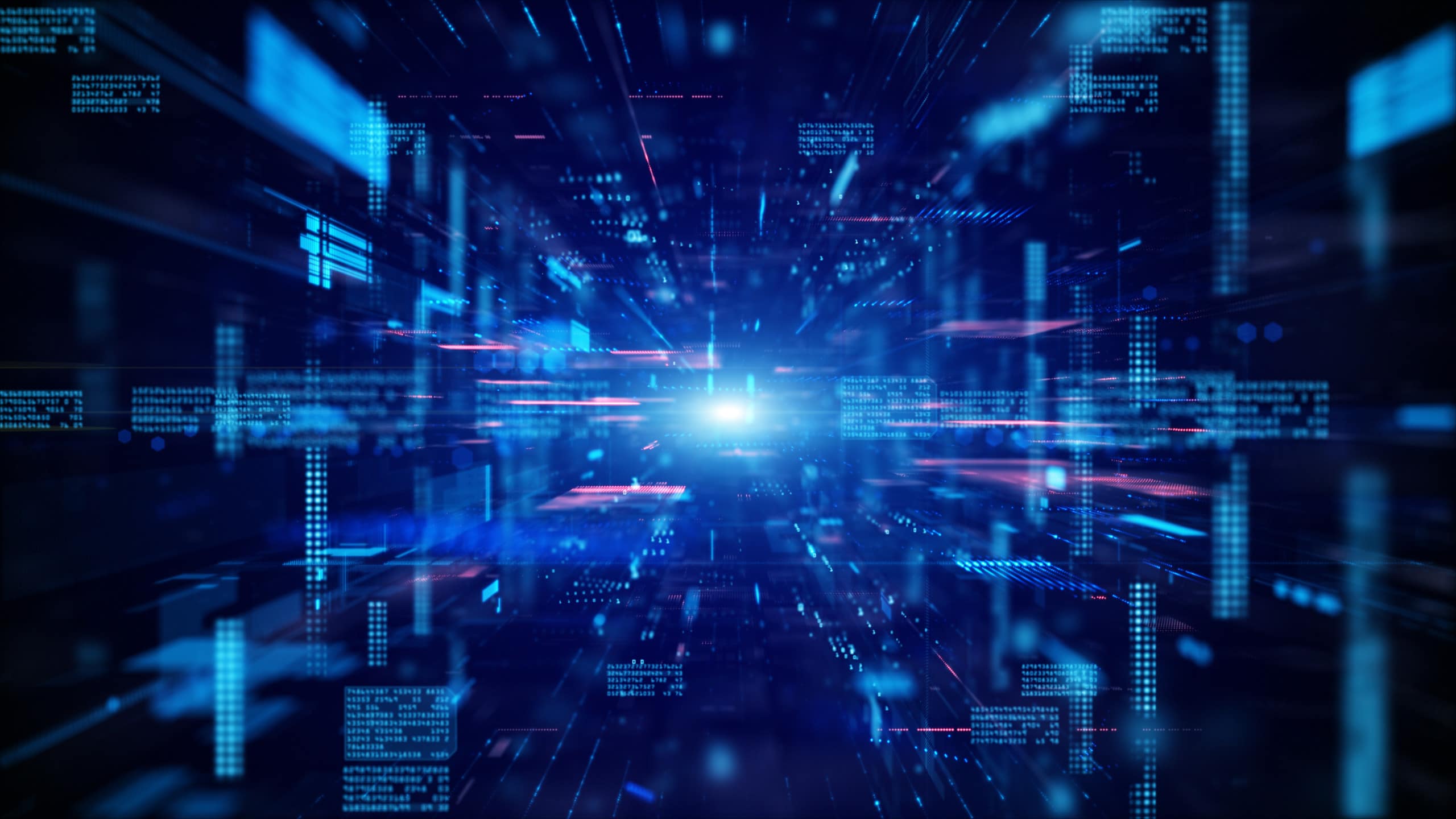
IT modernization is a crucial step toward enhancing efficiency, agility, and overall success. Staying ahead requires embracing the latest technological advancements in today’s fast-paced and highly competitive business landscape. By upgrading your systems, streamlining processes, and adopting innovative solutions, you can unlock a world of possibilities for your organization. From boosting productivity to improving cybersecurity and enabling seamless scalability, we’ll uncover the benefits that await those who embark on this transformative journey.
Key Takeaways
- IT modernization is crucial for businesses to stay competitive in today’s digital age.
- Modernization involves updating and improving existing IT systems and infrastructure.
- To successfully modernize IT, businesses should consider various strategies such as cloud adoption, application modernization, and data-driven decision-making.
- Different types of IT modernization include infrastructure, application, and data.
- Organizations can choose from different approaches, like “big bang” or phased.
- Sustainable IT practices focus on minimizing the environmental impact of IT operations.
- Security should be a top priority in IT modernization efforts.
On this page:
- IT Modernization Overview
- Challenges in Modernization
- Modernization vs Transformation
- Modernization Strategies
- Types of IT Modernization
- IT Modernization Approaches
- Best practices for adopting IT modernization
- Democratizing IT Development
- Sustainable IT Practices
- Security in Modernization
- Frequently Asked Questions
IT Modernization Overview
In the world of technology, IT modernization is a crucial process that organizations undertake to upgrade their outdated systems and infrastructure. It involves adopting new technologies, updating software applications, and improving overall IT operations. Below, we explore the key drivers behind IT modernization, its benefits, and future trends in this field.
Key Drivers
Several key drivers push organizations toward IT modernization. First and foremost is the need to keep up with rapidly evolving technology. As new advancements emerge, older systems become obsolete and less efficient. By embracing IT modernization, you can ensure your organization stays competitive and relevant in the fast-paced digital landscape. Another driver for IT modernization is the increasing demand for enhanced cybersecurity. Organizations must strengthen their defense mechanisms, with cyber threats becoming more sophisticated and prevalent. By upgrading your IT infrastructure, you can implement robust security measures to protect sensitive data and mitigate potential risks. Furthermore, changing regulatory requirements often necessitate IT modernization. Compliance with industry standards and regulations is essential for businesses to operate legally and maintain customer trust. Upgrading your systems allows you to meet these requirements efficiently and effectively. 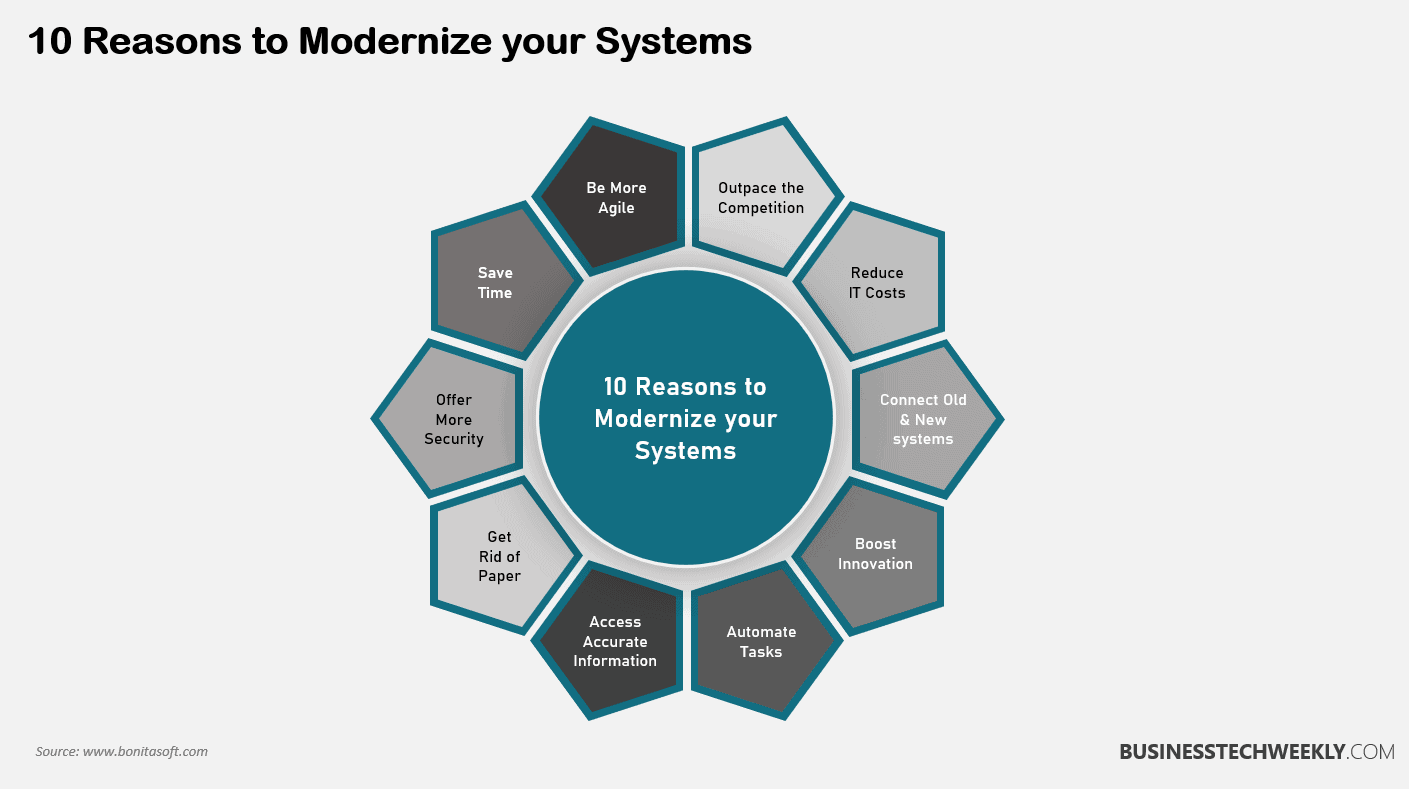
Benefits
IT modernization offers numerous benefits for organizations striving to stay ahead in today’s digital age. One of the primary advantages is improved operational efficiency. Outdated systems can be slow, unreliable, and prone to errors. By modernizing your IT infrastructure, you can streamline processes, automate tasks, and optimize resource allocation, resulting in increased productivity and cost savings. Another significant benefit of IT modernization is enhanced scalability and flexibility. As your business grows or experiences fluctuations in demand, having a scalable infrastructure becomes crucial. Modernizing your systems enables you to easily adapt to changing needs without disruptions or limitations. IT modernization empowers organizations with better data management capabilities. With large volumes of data being generated daily, an efficient system to process, store, and analyze data is essential. Upgrading your IT infrastructure allows you to leverage advanced analytics tools and techniques to gain valuable insights for informed decision-making. 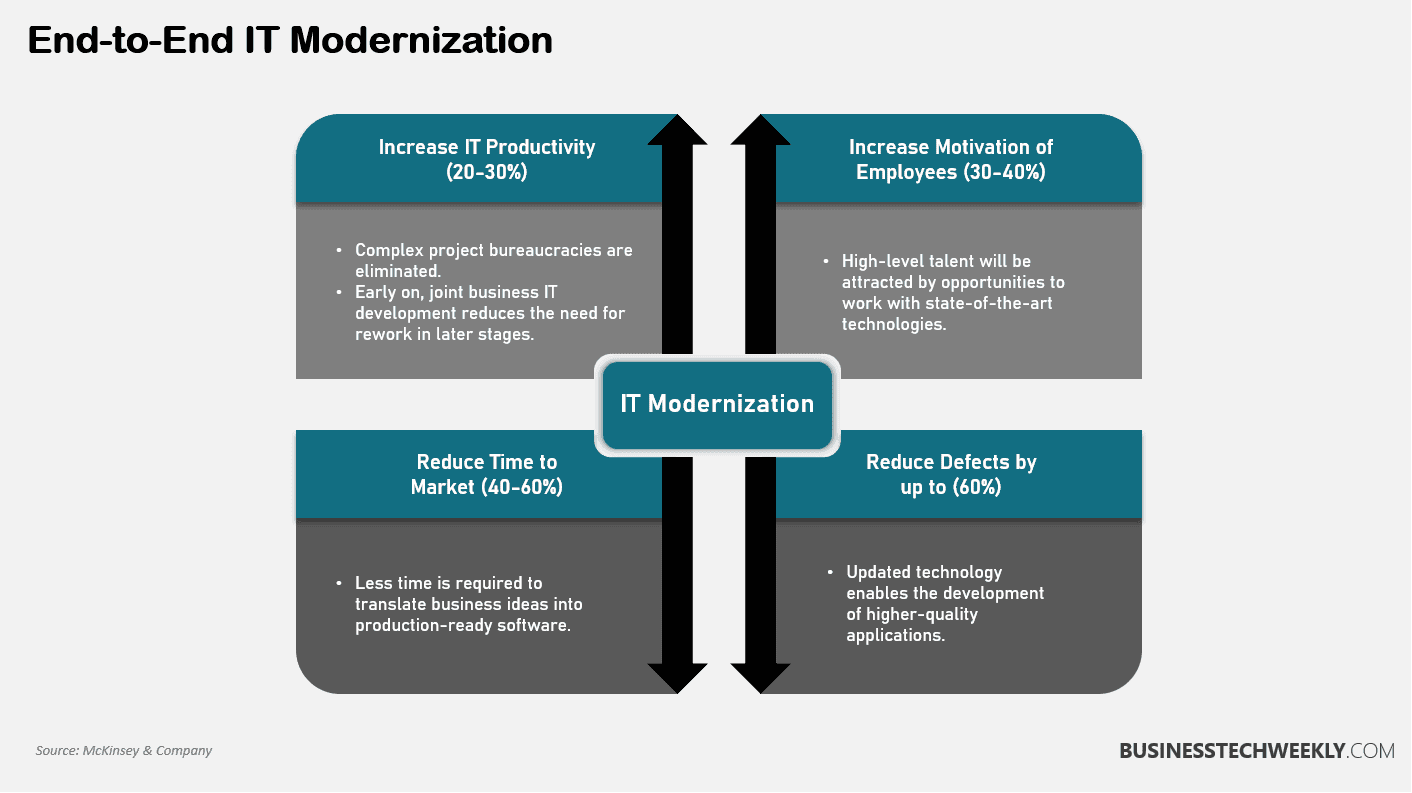
Future Trends
Looking ahead, several trends are shaping the future of IT modernization. One such trend is the increased adoption of cloud computing. Cloud-based solutions offer scalability, flexibility, and cost-effectiveness, making them attractive for organizations seeking IT modernization. Another emerging trend is integrating artificial intelligence (AI) and machine learning (ML) into IT systems. AI and ML technologies enable automation, predictive analysis, and intelligent decision-making. Incorporating these technologies into your IT infrastructure can unlock new possibilities for innovation and efficiency.
Challenges in Modernization
Understanding Challenges
As you embark on the journey of IT modernization, it is important to understand the challenges that may come your way. One of the main hurdles is the complexity involved in modernizing legacy systems. These systems have existed for years and may have outdated technologies or incompatible components. Navigating through this complexity requires careful planning and expertise. Another challenge is the resistance to change from employees accustomed to working with the existing systems. Change can be unsettling, and some employees may fear that modernization will impact their jobs. Addressing these concerns and providing adequate training and support can help ease this transition. Furthermore, budget constraints can pose a significant challenge regarding IT modernization. Upgrading systems and implementing new technologies often require substantial financial investments. Finding innovative ways to allocate resources and secure funding is crucial.
Cybersecurity Concerns
In today’s digital landscape, cybersecurity is a top concern for organizations undergoing IT modernization. As you adopt new technologies and migrate data to cloud platforms, you must ensure robust security measures are in place. This includes implementing firewalls, encryption protocols, and access controls to safeguard sensitive information from cyber threats. Moreover, as you integrate different systems and applications during the modernization process, there is a risk of introducing vulnerabilities or creating gaps in security defenses. Conducting thorough risk assessments and vulnerability scans to identify potential weaknesses is essential. Regular monitoring and proactive threat detection are vital for maintaining a secure IT environment.
Overcoming Obstacles
While challenges may arise during IT modernization, there are strategies you can employ to overcome them. First and foremost, having a well-defined roadmap and clear objectives can help guide your modernization efforts. This roadmap should outline the specific goals you aim to achieve through modernization and provide a timeline for implementation. Collaboration and communication are key to overcoming obstacles. Engaging stakeholders from different departments and involving them in decision-making can help gain buy-in and support for the modernization initiative. Fostering a culture of continuous learning and adaptability within your organization can facilitate smoother transitions during modernization. Furthermore, partnering with experienced IT service providers or consultants can provide valuable expertise and guidance throughout your modernization journey. These professionals can help assess your current systems, develop a tailored modernization strategy, and assist with implementing and integrating new technologies.
Modernization vs Transformation
IT Modernization Defined
Now that you understand the challenges in modernizing your IT infrastructure let’s delve deeper into what IT modernization means. IT modernization refers to updating and upgrading your existing IT systems, applications, and infrastructure to align with technological advancements and industry standards. It involves replacing outdated hardware and software, optimizing workflows, improving security measures, and enhancing overall efficiency. One of the primary goals of IT modernization is to ensure that your organization’s technology stack remains up-to-date and can keep pace with the rapidly evolving digital landscape. Modernizing your IT infrastructure allows you to leverage new technologies such as cloud computing, artificial intelligence (AI), Internet of Things (IoT), and automation to streamline operations, improve productivity, and drive innovation. IT modernization is not a one-time event but an ongoing process requiring continuous monitoring and adaptation. As technology advances rapidly, it is essential to regularly assess your IT systems and identify areas that need improvement or enhancement. By adopting a proactive approach to IT modernization, you can stay ahead of the curve and maximize the benefits offered by emerging technologies.
Digital Transformation Explained
While IT modernization focuses on updating your existing systems, digital transformation takes things further by fundamentally changing how your organization operates and delivers value. Digital transformation entails using digital technologies to revolutionize business processes, customer experiences, and business models. READ MORE: Navigating DX: Examples of Digital Transformation Successes Unlike traditional approaches focusing solely on technology upgrades, digital transformation encompasses a holistic mindset, culture, and strategy shift. It involves reimagining business processes from end to end by leveraging digital tools to automate tasks, enable data-driven decision-making, enhance customer engagement, and create new revenue streams. Digital transformation goes beyond simply digitizing manual processes; it involves embracing innovation and exploring new ways to leverage technology for competitive advantage. Organizations undergoing digital transformation often adopt agile methodologies, foster a culture of experimentation and collaboration, and prioritize customer-centricity.
Modernization Strategies
Effective Practices
Regarding IT modernization, several effective practices can help you navigate the process smoothly and achieve your desired outcomes. Firstly, conducting a thorough assessment of your current IT infrastructure and systems is crucial. This will give you a clear understanding of what needs to be updated or replaced. By identifying the strengths and weaknesses of your existing technology, you can make informed decisions about which areas require immediate attention. Next, prioritize your modernization efforts based on business impact and feasibility. Determine which systems are critical to your operations and focus on modernizing those first. This approach allows you to maximize the benefits of modernization while minimizing disruptions to your day-to-day business activities. Another effective practice is to adopt a phased approach to modernization. Rather than attempting a complete overhaul all at once, break down the process into smaller, manageable projects. This allows for easier implementation, testing, and adjustment along the way. By taking incremental steps towards modernization, you can minimize risks and ensure a smoother transition for your organization. Furthermore, collaboration is key when it comes to successful IT modernization. Involve stakeholders from various departments within your organization to gather insights and perspectives. Their input can help shape the modernization strategy and ensure that it aligns with the business’s overall goals. Consider partnering with external experts or consultants who specialize in IT modernization. Their expertise can provide valuable guidance throughout the process.
Lifecycle Concepts
Understanding lifecycle concepts is essential for effective IT modernization. The lifecycle of an IT system consists of several stages: planning, development, deployment, operation, and maintenance. During the planning stage, define clear goals and objectives for your modernization project. Identify key milestones and establish a timeline for implementation. This stage sets the foundation for a successful modernization initiative. In the development phase, design and build new systems or update existing ones based on the requirements identified during the planning stage. This phase involves coding, testing, and quality assurance to ensure the new systems meet your organization’s needs. Once the development is complete, it’s time for deployment. This stage involves migrating data and applications to the new systems and ensuring a smooth transition from the old to the new environment. Thorough testing and training are crucial at this stage to minimize disruptions and ensure user adoption. After deployment, the operation phase begins. This is when the modernized systems are used in day-to-day operations. Regular monitoring and maintenance are necessary to keep the systems running smoothly and address any issues. Finally, the maintenance phase focuses on ongoing support and updates for the modernized systems. Regular evaluations and enhancements are essential to keep up with evolving technology trends and business needs.
Types of IT Modernization
Network Modernization
When it comes to network modernization, there are several key aspects to consider. Upgrading your network infrastructure can greatly enhance your organization’s connectivity and efficiency. One important step in network modernization is the implementation of software-defined networking (SDN). SDN allows you to centrally manage and control your network, making it more agile and responsive to changing business needs. Another crucial aspect of network modernization is the adoption of cloud-based networking solutions. READ MORE: Powering Your Business with Network Transformation By leveraging cloud technology, you can reduce the reliance on physical hardware and achieve greater scalability and flexibility. Cloud-based networking enables easier integration with other cloud services, facilitating seamless collaboration and data sharing within your organization. Furthermore, network security should be a top priority when modernizing your IT infrastructure. Implementing robust security measures becomes essential with the increasing number of cyber threats. This includes deploying advanced firewalls, intrusion detection systems, and encryption protocols to safeguard your network from unauthorized access and data breaches. Network virtualization plays a significant role in modernizing your IT environment. By decoupling network services from the underlying hardware, virtualization allows for greater agility and resource utilization. It enables you to create multiple virtual networks on a single physical infrastructure, optimizing performance and reducing costs.
Application Modernization
Application modernization involves updating or replacing legacy applications to meet the evolving needs of your organization. Legacy applications often lack compatibility with newer technologies and struggle to meet increasing user demands. By modernizing these applications, you can improve their performance, scalability, and usability. One approach to application modernization is containerization. Containers provide a lightweight and portable way to package software applications and their dependencies. They allow for easier deployment across different environments, enabling faster development cycles and improved resource utilization. Another strategy for application modernization is microservices architecture. This approach involves breaking down monolithic applications into smaller, independent services that can be developed, deployed, and scaled individually. Microservices architecture promotes agility, scalability, and fault tolerance, making adapting to changing business requirements easier. Furthermore, adopting low-code or no-code development platforms can accelerate the application modernization process. These platforms provide visual interfaces and pre-built components, allowing faster application development without extensive coding knowledge. They empower business users to create and customize applications according to their needs, reducing reliance on IT departments. 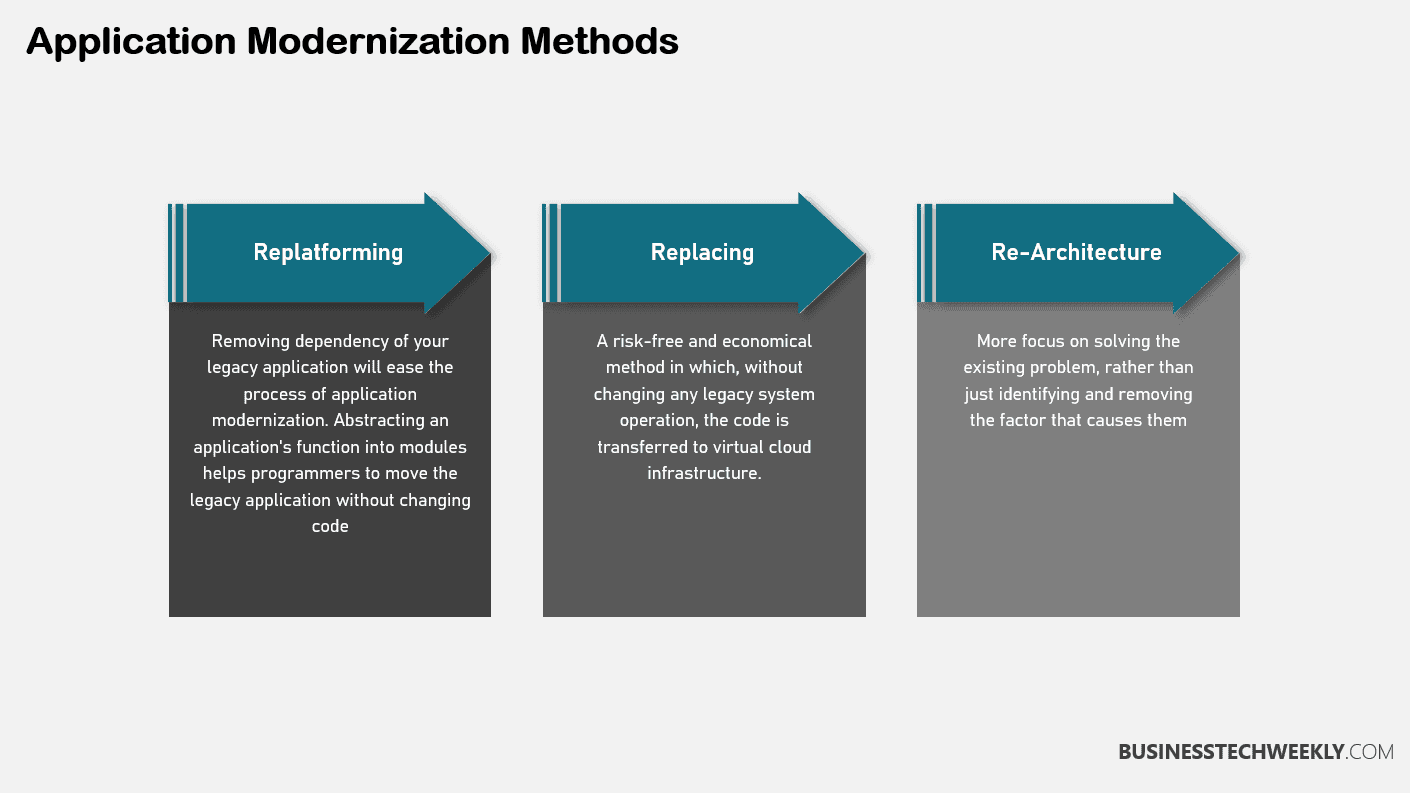
Device Modernization
Device modernization emphasizes upgrading your hardware devices to improve productivity and user experience. This includes replacing outdated computers, laptops, mobile devices, and other peripherals with newer models that offer enhanced performance and functionality. One important aspect of device modernization is mobile device management (MDM). MDM solutions enable centralized control and management of mobile devices within your organization. They allow you to enforce security policies, manage software updates, and remotely wipe data in case of loss or theft. MDM ensures your mobile devices are secure and compliant with your organization’s standards. Bring-your-own-device (BYOD) policies have gained popularity in recent years to modernize device usage in the workplace. BYOD allows employees to use their devices for work, increasing flexibility and productivity. However, proper security measures are crucial to protect sensitive information when using personal devices. 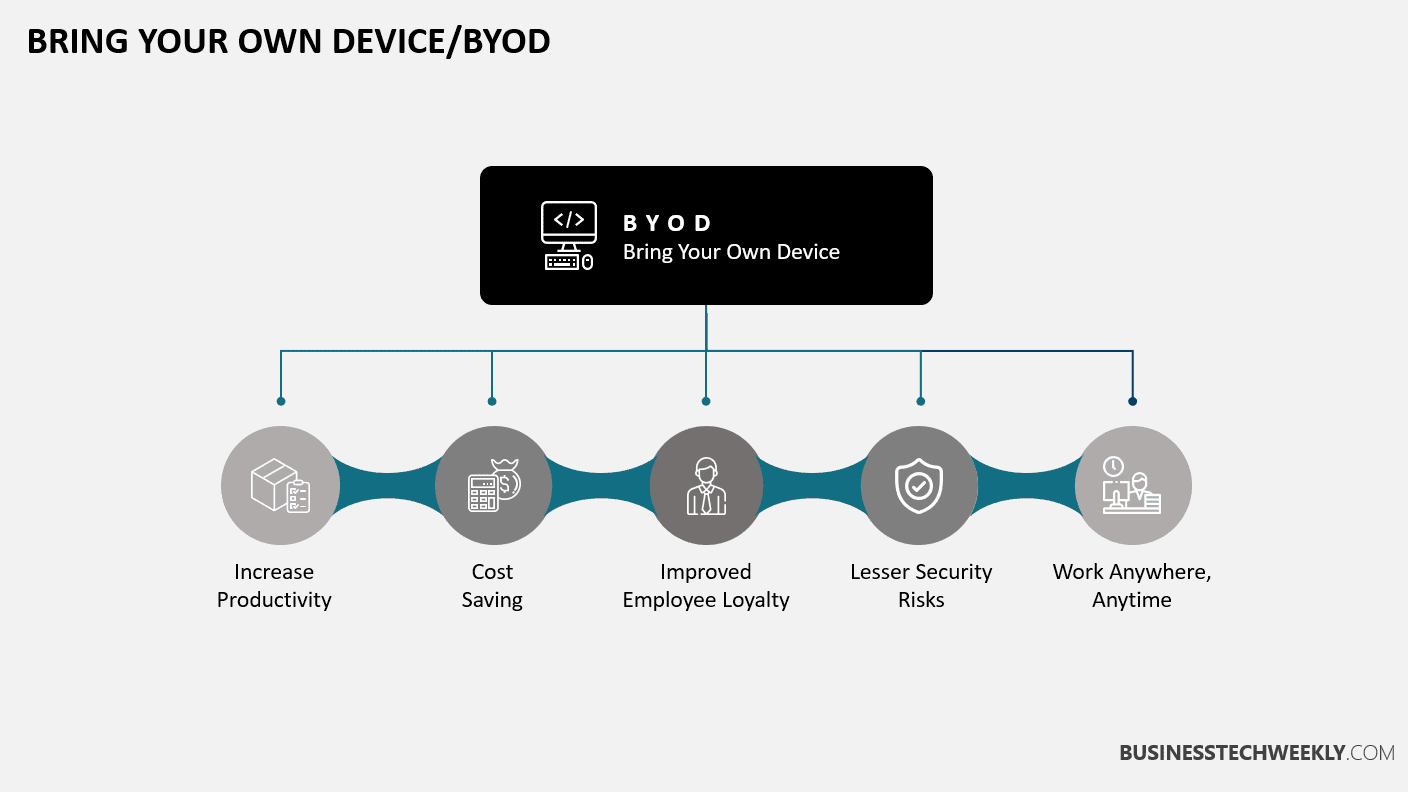
IT Modernization Approaches
Hybrid IT Strategies
When it comes to modernizing your IT infrastructure, one approach you can consider is hybrid IT. This strategy combines both on-premises and cloud-based solutions to optimize your technology environment. With hybrid IT, you have the flexibility to leverage the benefits of both worlds. One advantage of adopting a hybrid IT strategy is that it allows you to maintain control over sensitive data by keeping certain applications and data on-premises. This ensures compliance with regulatory requirements and provides an added layer of security. At the same time, you can take advantage of the scalability and cost-effectiveness offered by cloud services for other aspects of your infrastructure. By adopting a hybrid IT approach, you can also address specific workload requirements more effectively. For example, suppose you have legacy applications that are not easily migrated to the cloud. In that case, you can keep them on-premises while using cloud services for newer applications. This enables you to optimize performance and cost-efficiency based on the unique needs of each workload.
Multi-Cloud Strategies
Another approach to IT modernization is multi-cloud adoption. Rather than relying on a single cloud provider, multi-cloud strategies involve using multiple cloud platforms simultaneously. This offers several benefits for organizations seeking to modernize their IT infrastructure. One key advantage of multi-cloud strategies is increased flexibility and resilience. By leveraging multiple cloud providers, you can avoid vendor lock-in and reduce dependency on a single provider’s infrastructure or services. READ MORE: Unlocking the Power of Multi Cloud Architecture This allows you to choose the most suitable cloud platform for each application or workload based on performance requirements, pricing models, and geographic presence. Furthermore, multi-cloud strategies enable organizations to mitigate risks associated with service disruptions or outages. If one cloud provider experiences downtime or technical issues, you can seamlessly switch workloads to another provider without significant disruptions to your operations. This redundancy helps ensure business continuity and minimizes the impact of any potential service interruptions.
Edge Computing Integration
In addition to hybrid IT and multi-cloud strategies, edge computing integration is another approach gaining traction in IT modernization efforts. Edge computing involves processing data closer to its source rather than relying solely on centralized cloud infrastructure. This approach offers several benefits, particularly for applications that require low latency or deal with large volumes of data. By integrating edge computing into your IT infrastructure, you can reduce latency and improve performance for critical applications. For example, in industries such as autonomous vehicles or real-time analytics, where immediate processing is crucial, edge computing allows for faster decision-making by minimizing the time it takes for data to travel to and from a central cloud server. Furthermore, edge computing enables organizations to optimize bandwidth usage and reduce costs associated with transferring large amounts of data to the cloud. By processing data at the edge, only relevant information must be sent to the cloud for further analysis or storage. This reduces network congestion and lowers bandwidth requirements, resulting in more efficient use of resources.
Best practices for adopting IT modernization
- Develop a modernization roadmap: To modernize your IT system, it is crucial to establish a well-defined roadmap. This roadmap should outline the necessary actions, time frame, and objectives for the modernization process.
- Prioritizing modernization initiatives: Find and concentrate on important aspects for updating according to business requirements and possible effects.
- Adopt agile methodologies and continuous integration practices: To make sure modernization efforts are efficient and progressive, it is recommended to embrace agile methodologies and continuous integration practices. This will allow for iterative progress and ensure that the process runs smoothly.
- Encourage collaboration among teams and invest in skill development: To ensure a successful modernization process, it is crucial to foster collaboration among teams and prioritize skill development. This will facilitate the smooth implementation of modernization initiatives.
- Leverage no-code solutions to overcome integration challenges: To overcome integration challenges and speed up application development, you can make use of no-code solutions. These solutions don’t require extensive coding knowledge, allowing you to leverage them effectively.
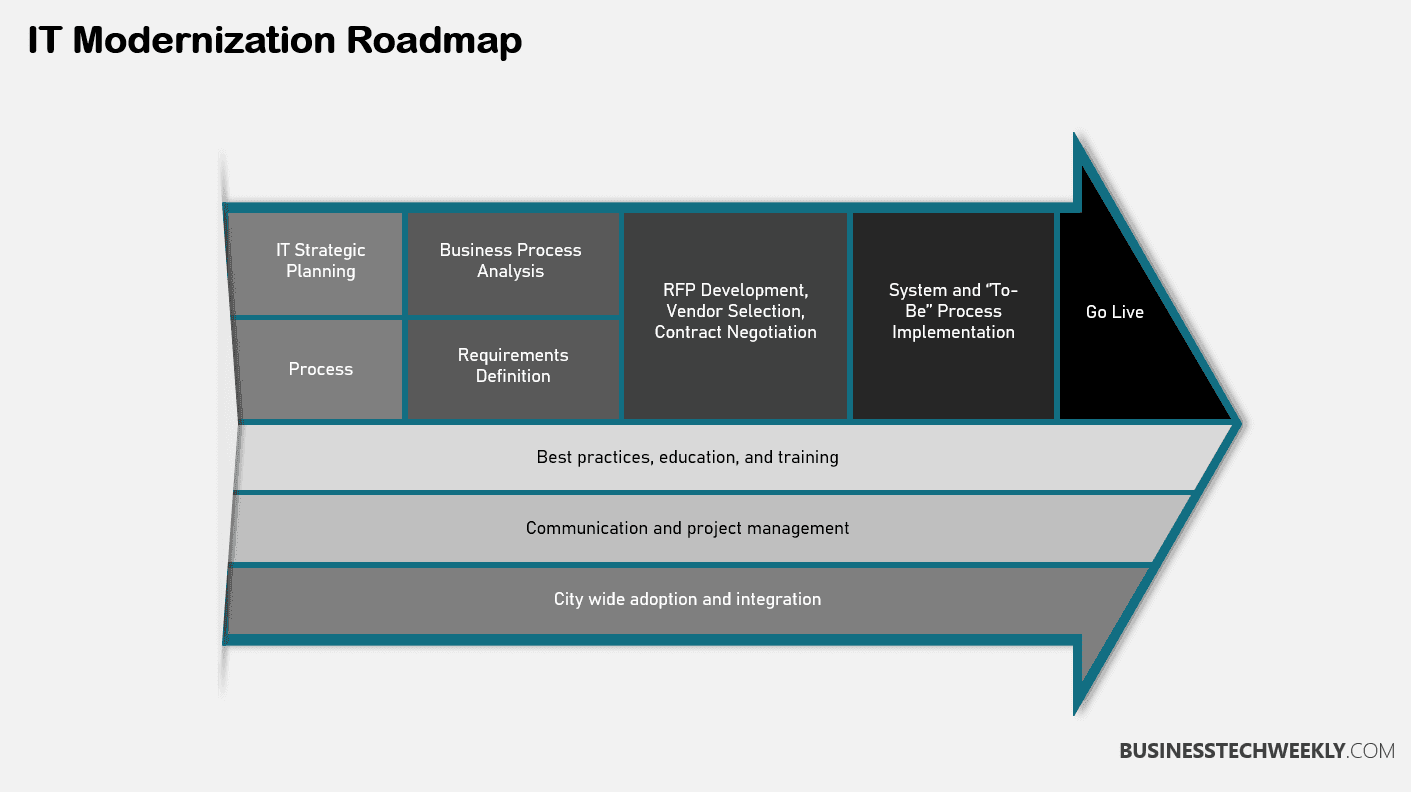
Democratizing IT Development
Concept Explained
In IT modernization, democratizing IT development is a key concept that aims to empower individuals and teams to participate in the development process. It breaks down barriers and promotes collaboration, allowing more people to contribute their skills and ideas to create innovative solutions. Traditionally, IT development has been limited to a select group of experts who possess specialized knowledge and technical skills. However, with the democratization of IT development, this exclusivity is being challenged. Anyone with a passion for technology and a willingness to learn can actively participate in the development process. Organizations can tap into a wider pool of talent and creativity by democratizing IT development. This approach encourages diversity of thought and perspective, often leading to more innovative solutions. It also fosters a sense of ownership and empowerment among team members, as they can contribute their unique skills and insights. One way to achieve this democratization is through low-code or no-code platforms. These platforms provide visual interfaces and pre-built components that enable users with little or no coding experience to build applications. You don’t need an expert programmer to develop software solutions with these tools. Instead, you can focus on your domain expertise and leverage the platform’s capabilities to bring your ideas to life. Another aspect of democratizing IT development is embracing agile methodologies. Agile emphasizes collaboration, flexibility, and iterative development. It encourages cross-functional teams to work together closely throughout the entire development lifecycle. By breaking down silos between different roles and departments, agile methodologies promote knowledge sharing and enable individuals from various backgrounds to contribute effectively.
Implementation Strategies
To implement the concept of democratizing IT development successfully, organizations can adopt several strategies:
- Training and Education: Provide training programs and resources that empower individuals with the necessary skills and knowledge for IT development. This can include coding boot camps, online courses, and mentorship programs.
- Internal Collaboration Platforms: Implement collaboration tools and platforms that facilitate communication and knowledge sharing among team members. These platforms can include project management tools, chat applications, and document-sharing platforms.
- Cross-Functional Teams: Form cross-functional teams that bring together individuals with diverse backgrounds and expertise. This encourages collaboration and ensures that different perspectives are considered during development.
- Continuous Learning Culture: Foster a culture of continuous learning and improvement. Encourage employees to stay up-to-date with the latest technologies and industry trends by providing opportunities for professional development.
Sustainable IT Practices
Sustainable Modernization
Regarding IT modernization, sustainability is a key factor to consider. By adopting sustainable practices, you can improve the efficiency and effectiveness of your IT systems and contribute to a greener and more environmentally friendly future. Sustainable modernization involves implementing strategies that minimize the environmental impact of IT operations. This includes reducing energy consumption, optimizing resource utilization, and adopting eco-friendly technologies. Doing so can reduce your carbon footprint and contribute to global efforts in combating climate change. One important aspect of sustainable modernization is energy efficiency. By optimizing your IT infrastructure and implementing energy-efficient hardware and software solutions, you can significantly reduce energy consumption. This helps the environment and lowers operational costs by decreasing electricity bills. Another crucial element is resource optimization. You can better use your resources by leveraging virtualization technologies, cloud computing, and efficient data management practices. This reduces the need for physical infrastructure, such as servers and storage devices, leading to cost savings and a smaller environmental footprint. In addition to energy efficiency and resource optimization, recycling and responsible disposal are essential for sustainable IT practices. Properly disposing of electronic waste (e-waste) prevents hazardous materials from polluting the environment. Recycling e-waste also allows valuable resources to be recovered and reused.
Essential Steps for Sustainability
To achieve sustainable IT practices during modernization, there are several essential steps you should follow:
- Conduct an environmental impact assessment to identify areas where improvements can be made. This assessment will help you understand your IT infrastructure’s current environmental impact.
- Develop a sustainability strategy that aligns with your organization’s goals and values. This strategy should outline specific actions you will take to reduce energy consumption, optimize resource utilization, and promote recycling.
- Implement energy-efficient hardware and software solutions. This includes using energy-efficient servers, desktops, laptops, and networking equipment. It also involves optimizing software configurations to minimize resource usage.
- Adopt virtualization technologies to consolidate servers and reduce the physical infrastructure footprint. Virtualization allows you to run multiple virtual machines on a single physical server, saving energy and space.
- Embrace cloud computing to reduce the need for on-premises infrastructure. Cloud services provide scalable and flexible IT resources, allowing you to optimize resource utilization based on demand.
- Implement effective data management practices to reduce storage requirements and improve data retrieval efficiency. This includes deduplication, compression, and archiving strategies.
- Establish a recycling program for e-waste disposal. Partner with certified recycling companies that specialize in handling electronic equipment responsibly.
Security in Modernization
Cybersecurity Integration
Regarding IT modernization, one of the key considerations is cybersecurity integration. As you upgrade your systems and adopt new technologies, ensuring that your security measures are current is crucial. Cyber threats are constantly evolving, and your organization could be vulnerable to attacks without proper integration of cybersecurity practices. To effectively integrate cybersecurity into your modernization efforts, you need to start by conducting a thorough assessment of your current security infrastructure. Identify any gaps or weaknesses that need to be addressed. This assessment will serve as the foundation for developing a comprehensive cybersecurity strategy. Once you have identified areas for improvement, it’s important to prioritize implementing security measures. This may include updating firewalls, implementing multi-factor authentication, encrypting sensitive data, and regularly patching software vulnerabilities. By taking these proactive steps, you can significantly reduce the risk of cyberattacks and protect your valuable assets. In addition to technical measures, employee training plays a crucial role in cybersecurity integration. Your employees are often the first line of defense against cyber threats. By providing them with regular training on best practices for identifying and responding to potential security risks, you can empower them to become an integral part of your cybersecurity strategy.
Security Modernization Concepts
As you embark on IT modernization initiatives, it’s important to familiarize yourself with key concepts related to security modernization. These concepts will help guide your decision-making process and ensure that you make informed choices when securing your digital assets. One concept that is gaining traction in the field of security modernization is zero-trust architecture. This approach assumes that no user or device should be trusted by default, regardless of their location within the network. Instead, every access request is treated as potentially malicious until proven otherwise through rigorous authentication and authorization processes. Another important concept is defense-in-depth. This strategy involves implementing multiple layers of security controls to protect your systems and data. By employing physical, technical, and administrative safeguards, you can create a robust defense system that is more resilient to attacks. Lastly, continuous monitoring is crucial for effective security modernization. It involves the real-time monitoring of your IT infrastructure to detect and respond to potential security incidents. By regularly reviewing logs, analyzing network traffic, and conducting vulnerability assessments, you can identify and mitigate threats before they cause significant damage.
Frequently Asked Questions
What is IT modernization?
IT modernization refers to updating and upgrading an organization’s IT infrastructure, systems, and processes to align with current technology trends and meet evolving business needs. It involves adopting new technologies, improving efficiency, enhancing security, and enabling innovation.
What are the challenges in IT modernization?
Challenges in IT modernization include legacy system dependencies, resistance to change, budget constraints, data migration complexities, and ensuring seamless integration with existing systems. Overcoming these challenges requires careful planning, stakeholder alignment, and a well-defined roadmap.
What is the difference between modernization and transformation?
Modernization focuses on improving existing systems and processes using new technologies while maintaining continuity. Transformation goes beyond modernization by fundamentally changing how an organization operates, often involving a complete overhaul of systems, workflows, and business models.
What are some strategies for IT modernization?
Strategies for IT modernization include cloud adoption, virtualization, automation of manual processes, application refactoring or re-platforming, leveraging microservices architecture, implementing DevOps practices, adopting agile methodologies, and embracing emerging technologies like AI and IoT.
What are the types of IT modernization?
Types of IT modernization include infrastructure modernization (upgrading hardware and network components), application modernization (refactoring or replacing legacy applications), data modernization (improving data quality and accessibility), process modernization (streamlining workflows), and cultural/organizational modernization (fostering a culture of innovation).
How can “democratizing” IT development benefit organizations?
Democratizing IT development empowers non-technical users to create applications or customize existing ones without heavy reliance on developers. This improves agility, reduces development bottlenecks, fosters innovation from diverse perspectives, and enhances collaboration between business units and IT teams while reducing costs associated with custom development.
Why is security important in IT modernization?
Security is crucial in IT modernization as it safeguards sensitive data, protects against cyber threats, and ensures compliance with regulations. Modernization efforts should include robust security measures such as encryption, access controls, vulnerability assessments, and continuous monitoring to mitigate risks and maintain systems and data integrity.

